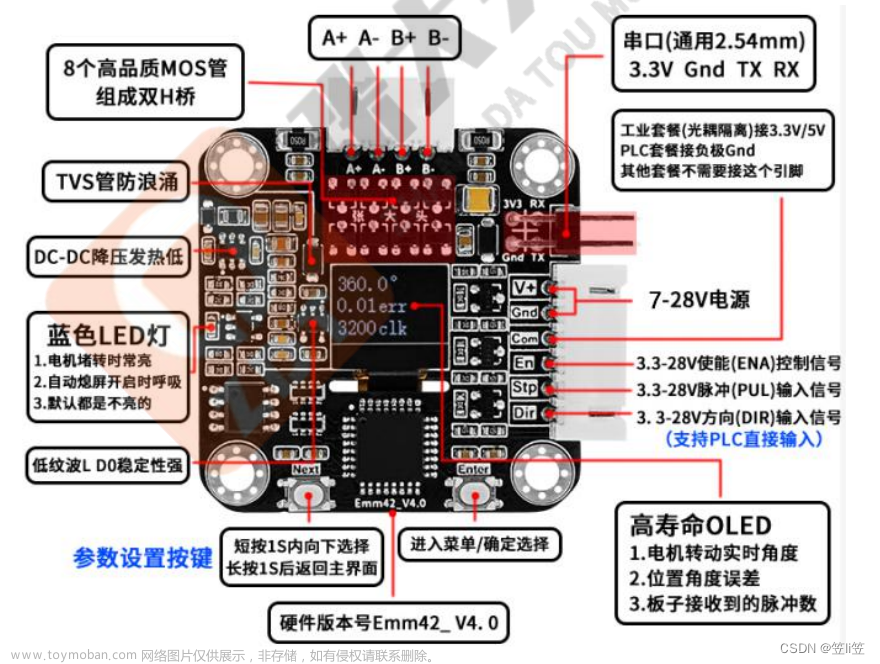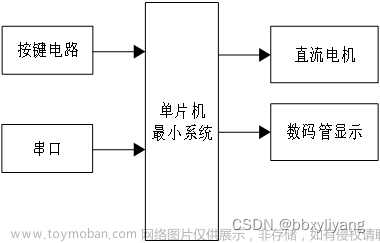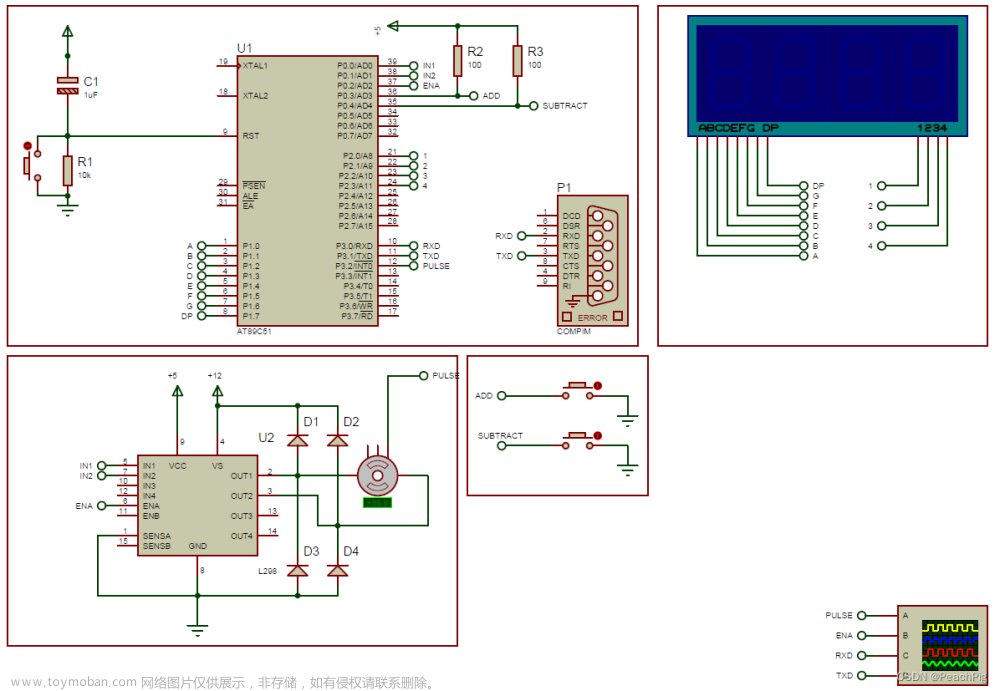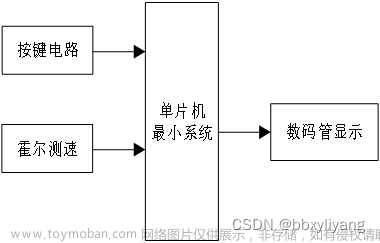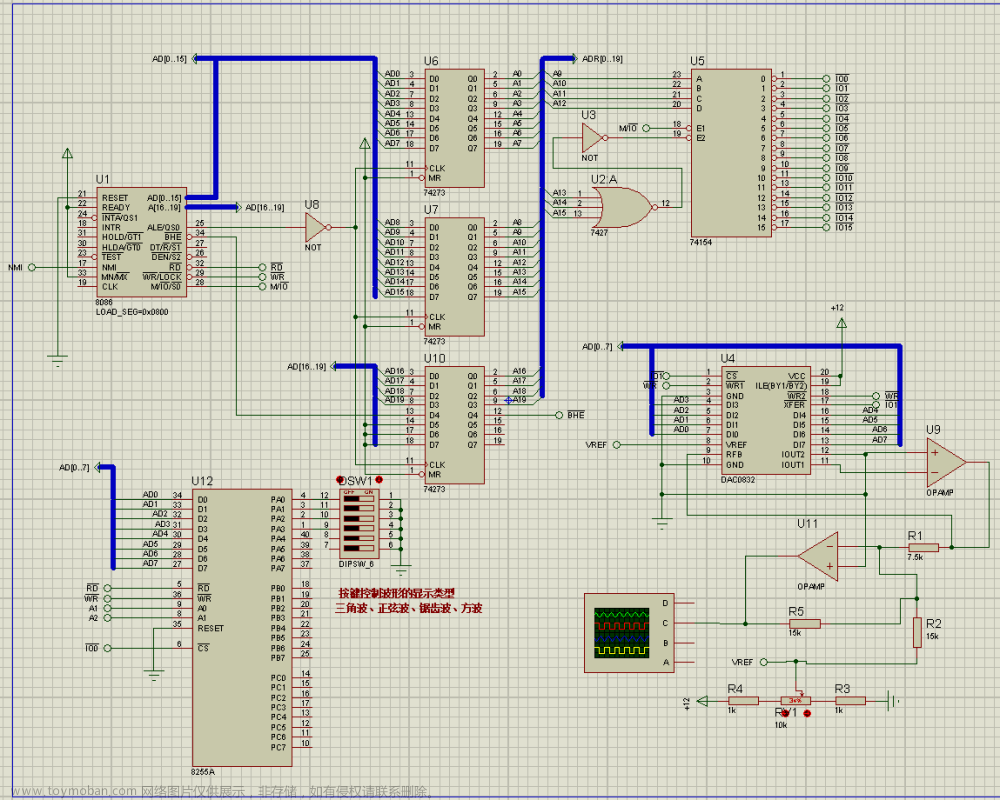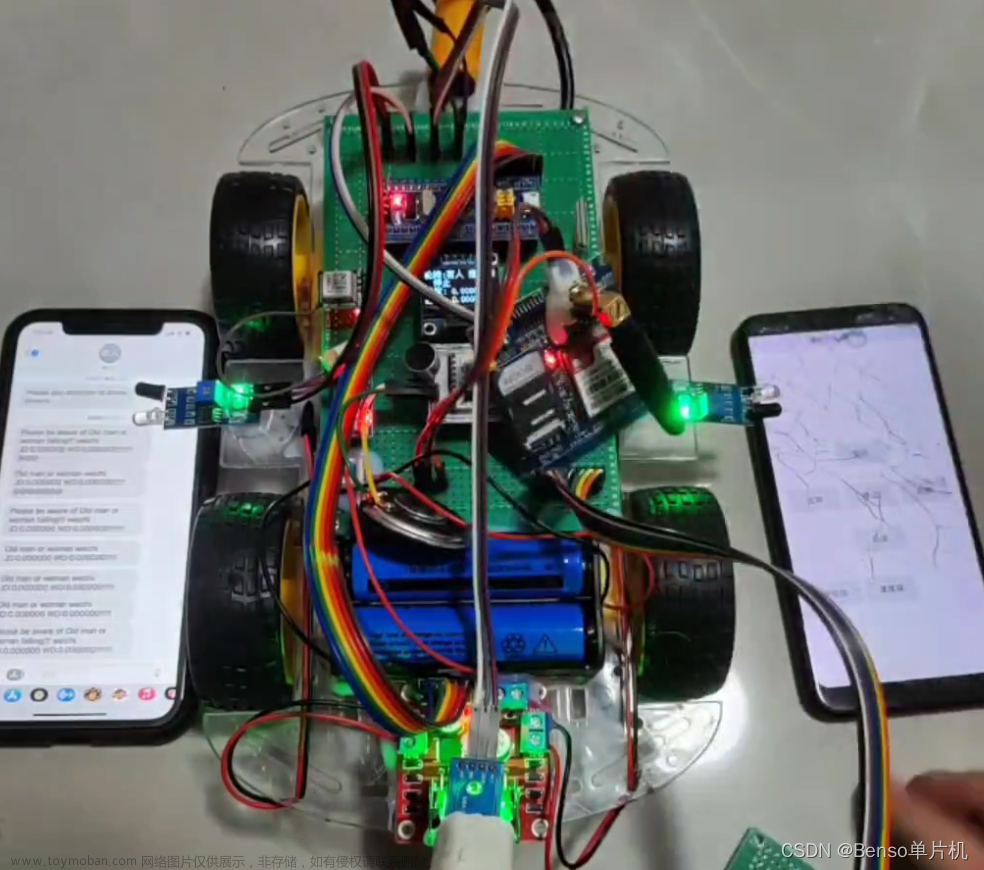接上一篇文章,话不多说直接开始
一、打开我们创建的工程文件,先就建立一个文件夹用来存放我们写的子文件(不建立也行),然后建立pid.h,pid.c存入我们建立的文件夹中,并把它的源文件和头文件添加进去,最后记得编译一下。

二、遥控器部分
先在main.h 中定义一个遥控器接收数据的结构体,参考了官方的定义不过我删了一部分不需要的。
typedef struct
{
struct
{
signed short ch0;
signed short ch1;
signed short ch2;
signed short ch3;
unsigned char s1;
unsigned char s2;
unsigned short sw;
}rc;
}DBUS;在main函数里初始化和中断使能DMA,注意这里我们是用了串口1来接收数据的
HAL_UART_Receive_DMA(&huart1,dbus_resive,18);//初始化DMA
__HAL_UART_ENABLE_IT(&huart1, UART_IT_IDLE);//中断使能DMA遥控接收到的数据需要进行拼接一下,如果大家不懂可以参考一下这位大佬下的这篇博客(https://blog.csdn.net/weixin_45850927/article/details/121299686)
uint8_t dbus_resive[18]; //用来储存接收到的数据的数组
void HAL_UART_RxCpltCallback(UART_HandleTypeDef *UartHandle)
{
remoter.rc.ch0 = (dbus_resive[0]| (dbus_resive[1] << 8)) & 0x07ff;
remoter.rc.ch0 -= 1024;
remoter.rc.ch1 = ((dbus_resive[1] >> 3) | (dbus_resive[2] << 5)) & 0x07ff;
remoter.rc.ch1 -= 1024;
remoter.rc.ch2 = ((dbus_resive[2] >> 6) | (dbus_resive[3] << 2) | (dbus_resive[4] << 10)) & 0x07ff;
remoter.rc.ch2 -= 1024;
remoter.rc.ch3 = ((dbus_resive[4] >> 1) | (dbus_resive[5] << 7)) & 0x07ff;
remoter.rc.ch3 -= 1024;
remoter.rc.s1 = ((dbus_resive[5] >> 4)& 0x000C) >> 2;
remoter.rc.s2 = ((dbus_resive[5] >> 4)& 0x0003);
remoter.rc.sw = dbus_resive[16]|(dbus_resive[17]<<8);
}经过处理后我们接收到四个通道的数据范围是(-660~660)
三,PID部分(PID其实网上资料有很多,这里就不详细介绍,直接贴代码,我用的是最简单的【笑哭】)
#ifndef __PID_H__
#define __PID_H__
#include "stdint.h"
typedef float fp32;
enum PID_MODE
{
PID_POSITION = 0,
PID_DELTA
};
typedef struct
{
uint8_t mode;
//PID 三参数
fp32 Kp;
fp32 Ki;
fp32 Kd;
fp32 max_out; //最大输出
fp32 max_iout; //最大积分输出
fp32 set;
fp32 fdb;
fp32 out;
fp32 Pout;
fp32 Iout;
fp32 Dout;
fp32 Dbuf[3]; //微分项 0最新 1上一次 2上上次
fp32 error[3]; //误差项 0最新 1上一次 2上上次
} PidTypeDef;
fp32 PID_Calc(PidTypeDef *pid,fp32 ref,fp32 set);
void PID_init(PidTypeDef *pid,uint8_t mode,const fp32 PID[3],fp32 max_out,fp32 max_iout);
#endif#include "pid.h"
#include "main.h"
#define LimitMax(input, max) \
{ \
if (input > max) \
{ \
input = max; \
} \
else if (input < -max) \
{ \
input = -max; \
} \
}
void PID_init(PidTypeDef *pid,uint8_t mode,const fp32 PID[3],fp32 max_out,fp32 max_iout)
{
if(pid==NULL||PID==NULL)
{
return;
}
pid->mode=mode;
pid->Kp=PID[0];
pid->Ki=PID[1];
pid->Kd=PID[2];
pid->max_out=max_out;
pid->max_iout=max_iout;
pid->Dbuf[0]=pid->Dbuf[1]=pid->Dbuf[2]=0.0f;
pid->error[0]=pid->error[1]=pid->error[2]=pid->Pout=pid->Iout=pid->Dout=pid->out=0.0f;
}
fp32 PID_Calc(PidTypeDef *pid, fp32 ref, fp32 set)
{
if (pid == NULL)
{
return 0.0f;
}
pid->error[2] = pid->error[1];
pid->error[1] = pid->error[0];
pid->set = set;
pid->fdb = ref;
pid->error[0] = set - ref;
if (pid->mode == PID_POSITION)
{
pid->Pout = pid->Kp * pid->error[0];
pid->Iout += pid->Ki * pid->error[0];
pid->Dbuf[2] = pid->Dbuf[1];
pid->Dbuf[1] = pid->Dbuf[0];
pid->Dbuf[0] = (pid->error[0] - pid->error[1]);
pid->Dout = pid->Kd * pid->Dbuf[0];
LimitMax(pid->Iout, pid->max_iout);
pid->out = pid->Pout + pid->Iout + pid->Dout;
LimitMax(pid->out, pid->max_out);
}
else if (pid->mode == PID_DELTA)
{
pid->Pout = pid->Kp * (pid->error[0] - pid->error[1]);
pid->Iout = pid->Ki * pid->error[0];
pid->Dbuf[2] = pid->Dbuf[1];
pid->Dbuf[1] = pid->Dbuf[0];
pid->Dbuf[0] = (pid->error[0] - 2.0f * pid->error[1] + pid->error[2]);
pid->Dout = pid->Kd * pid->Dbuf[0];
pid->out += pid->Pout + pid->Iout + pid->Dout;
LimitMax(pid->out, pid->max_out);
}
return pid->out;
}四,电机部分(因为我们只需要简单控个电机,所以就只需要在main.h中定义一些我们需要的就可以了)
typedef enum
{
CAN_CHASSIS_ALL_ID = 0x200,
CAN_AUXILIARY_ALL_ID = 0x1FF,
motor1 = 0x201,
motor2 = 0x202,
motor3 = 0x203,
motor4 = 0x204,
}can_msg_id;
typedef struct
{
uint16_t angle_value;
int16_t speed_rpm;
int16_t real_current;
uint8_t temperate;
int16_t real_angle;
}motor_measure_t;五,CAN
CAN基础的配置CUBEMX已经配置好了
配置CAN的过滤器
void can_filter_init(void)
{
CAN_FilterTypeDef can_filter_st;
can_filter_st.FilterActivation = ENABLE;
can_filter_st.FilterMode = CAN_FILTERMODE_IDMASK;
can_filter_st.FilterScale = CAN_FILTERSCALE_32BIT;
can_filter_st.FilterIdHigh = 0x0000;
can_filter_st.FilterIdLow = 0x0000;
can_filter_st.FilterMaskIdHigh = 0x0000;
can_filter_st.FilterMaskIdLow = 0x0000;
can_filter_st.FilterBank = 0;
can_filter_st.FilterFIFOAssignment = CAN_RX_FIFO0;
HAL_CAN_ConfigFilter(&hcan1, &can_filter_st);
}如果不太清楚可以参考一下这位大佬写的(https://blog.csdn.net/weixin_44663976/article/details/126138298)
配置完过滤器就可以开启CAN的使用了(这两步很重要,不要漏了)
HAL_CAN_Start(&hcan1);//启动CAN1
HAL_CAN_ActivateNotification(&hcan1,CAN_IT_RX_FIFO0_MSG_PENDING);//使能中断写到一个函数里防漏
void can1_start(void)
{
can_filter_init();
HAL_CAN_Start(&hcan1);//启动CAN1
HAL_CAN_ActivateNotification(&hcan1,CAN_IT_RX_FIFO0_MSG_PENDING);//使能中断
}
要让M3508电机转呢就要给电机发送电流
uint8_t chassis_can_send_data[8]; //用于接收电机的原始数据
CAN_TxHeaderTypeDef chassis_tx_message;
/**
* @brief send control current of motor (0x201, 0x202, 0x203, 0x204)
* @param[in] motor1: (0x201) 3508 motor control current, range [-16384,16384]
* @param[in] motor2: (0x202) 3508 motor control current, range [-16384,16384]
* @param[in] motor3: (0x203) 3508 motor control current, range [-16384,16384]
* @param[in] motor4: (0x204) 3508 motor control current, range [-16384,16384]
* @retval none
*/
void CAN_cmd_chassis(int16_t M1, int16_t M2, int16_t M3, int16_t M4)
{
uint32_t send_mail_box;
chassis_tx_message.StdId=CAN_CHASSIS_ALL_ID;
chassis_tx_message.IDE=CAN_ID_STD;
chassis_tx_message.RTR=CAN_RTR_DATA;
chassis_tx_message.DLC=0x08;
chassis_can_send_data[0]=M1>>8;
chassis_can_send_data[1]=M1;
chassis_can_send_data[2]=M2>>8;
chassis_can_send_data[3]=M2;
chassis_can_send_data[4]=M3>>8;
chassis_can_send_data[5]=M3;
chassis_can_send_data[6]=M4>>8;
chassis_can_send_data[7]=M4;
HAL_CAN_AddTxMessage(&hcan1,&chassis_tx_message,chassis_can_send_data,&send_mail_box);
}这个函数几乎每个例程里面都有,笔者也是直接拿过来用
CAN接收到数据后就会产生中断,进入中断回调函数,这个函数是需要我们自己编写的,我们需要在这里处理拼接接收到的数据,然后储存起来
uint8_t rx_data[8]; //用于接收电机原始数据
motor_measure_t motor_chassis[4]; //声明一个结构体数组来储存处理后电机的数据
//用来拼接电机数据
#define get_motor_measure(ptr,data)\
{\
(ptr)->angle_value=(uint16_t)((data)[0]<<8|(data)[1]);\
(ptr)->speed_rpm=(uint16_t)((data)[2]<<8|(data)[3]);\
(ptr)->real_current=(uint16_t)((data)[4]<<8|(data)[5]);\
(ptr)->temperate=(data)[6];\
(ptr)->real_angle=(ptr)->angle_value/8192.0f*360.0f;\
}
void HAL_CAN_RxFifo0MsgPendingCallback(CAN_HandleTypeDef *hcan)
{
CAN_RxHeaderTypeDef rx_header;
HAL_CAN_GetRxMessage(&hcan1, CAN_RX_FIFO0, &rx_header, rx_data);
switch(rx_header.StdId)
{
case motor1:
case motor2:
case motor3:
case motor4:
{
static uint8_t i = 0;
i = rx_header.StdId - motor1;
get_motor_measure(&motor_chassis[i],rx_data);
break;
}
default:
{
break;
}
}
}六、现在我们可以开始写main函数了(直接上代码)
/* USER CODE BEGIN Header */
/**
******************************************************************************
* @file : main.c
* @brief : Main program body
******************************************************************************
* @attention
*
* Copyright (c) 2023 STMicroelectronics.
* All rights reserved.
*
* This software is licensed under terms that can be found in the LICENSE file
* in the root directory of this software component.
* If no LICENSE file comes with this software, it is provided AS-IS.
*
******************************************************************************
*/
/* USER CODE END Header */
/* Includes ------------------------------------------------------------------*/
#include "main.h"
#include "can.h"
#include "dma.h"
#include "usart.h"
#include "gpio.h"
/* Private includes ----------------------------------------------------------*/
/* USER CODE BEGIN Includes */
#include "pid.h"
/* USER CODE END Includes */
/* Private typedef -----------------------------------------------------------*/
/* USER CODE BEGIN PTD */
#define unit_speed 1000/660.0 //这里改最大速度只需要改前面的1000就可以了
DBUS remoter;
uint8_t dbus_resive[18];
/* USER CODE END PTD */
/* Private define ------------------------------------------------------------*/
/* USER CODE BEGIN PD */
extern motor_measure_t motor_chassis[4];
PidTypeDef motor_pid;
fp32 pid_motor[3]={3.0,0.1,0}; // 这三个参数也是参考了其他大佬的
/* USER CODE END PD */
/* Private macro -------------------------------------------------------------*/
/* USER CODE BEGIN PM */
/* USER CODE END PM */
/* Private variables ---------------------------------------------------------*/
/* USER CODE BEGIN PV */
void HAL_CAN_RxFifo0MsgPendingCallback(CAN_HandleTypeDef *hcan);
void CAN_cmd_chassis(int16_t M1, int16_t M2, int16_t M3, int16_t M4);
fp32 PID_Calc(PidTypeDef *pid,fp32 ref,fp32 set);
/* USER CODE END PV */
/* Private function prototypes -----------------------------------------------*/
void SystemClock_Config(void);
/* USER CODE BEGIN PFP */
/* USER CODE END PFP */
/* Private user code ---------------------------------------------------------*/
/* USER CODE BEGIN 0 */
/* USER CODE END 0 */
/**
* @brief The application entry point.
* @retval int
*/
int main(void)
{
/* USER CODE BEGIN 1 */
signed int set_speed;
/* USER CODE END 1 */
/* MCU Configuration--------------------------------------------------------*/
/* Reset of all peripherals, Initializes the Flash interface and the Systick. */
HAL_Init();
/* USER CODE BEGIN Init */
/* USER CODE END Init */
/* Configure the system clock */
SystemClock_Config();
/* USER CODE BEGIN SysInit */
/* USER CODE END SysInit */
/* Initialize all configured peripherals */
MX_GPIO_Init();
MX_DMA_Init();
MX_CAN1_Init();
MX_USART1_UART_Init();
MX_USART6_UART_Init();
/* USER CODE BEGIN 2 */
HAL_UART_Receive_DMA(&huart1,dbus_resive,18);//初始化DMA
__HAL_UART_ENABLE_IT(&huart1, UART_IT_IDLE);//IDLE 中断使能
can1_start();
PID_init(&motor_pid,PID_POSITION,pid_motor,16000,16000); //PID初始化
/* USER CODE END 2 */
/* Infinite loop */
/* USER CODE BEGIN WHILE */
while (1)
{
/* USER CODE END WHILE */
set_speed = remoter.rc.ch1 * unit_speed;
PID_Calc(&motor_pid,motor_chassis[1].speed_rpm,set_speed);
CAN_cmd_chassis(motor_pid.out,motor_pid.out,motor_pid.out,motor_pid.out);
HAL_Delay(10);
/* USER CODE BEGIN 3 */
}
/* USER CODE END 3 */
}
/**
* @brief System Clock Configuration
* @retval None
*/
void SystemClock_Config(void)
{
RCC_OscInitTypeDef RCC_OscInitStruct = {0};
RCC_ClkInitTypeDef RCC_ClkInitStruct = {0};
/** Configure the main internal regulator output voltage
*/
__HAL_RCC_PWR_CLK_ENABLE();
__HAL_PWR_VOLTAGESCALING_CONFIG(PWR_REGULATOR_VOLTAGE_SCALE1);
/** Initializes the RCC Oscillators according to the specified parameters
* in the RCC_OscInitTypeDef structure.
*/
RCC_OscInitStruct.OscillatorType = RCC_OSCILLATORTYPE_HSE;
RCC_OscInitStruct.HSEState = RCC_HSE_ON;
RCC_OscInitStruct.PLL.PLLState = RCC_PLL_ON;
RCC_OscInitStruct.PLL.PLLSource = RCC_PLLSOURCE_HSE;
RCC_OscInitStruct.PLL.PLLM = 6;
RCC_OscInitStruct.PLL.PLLN = 168;
RCC_OscInitStruct.PLL.PLLP = RCC_PLLP_DIV2;
RCC_OscInitStruct.PLL.PLLQ = 4;
if (HAL_RCC_OscConfig(&RCC_OscInitStruct) != HAL_OK)
{
Error_Handler();
}
/** Initializes the CPU, AHB and APB buses clocks
*/
RCC_ClkInitStruct.ClockType = RCC_CLOCKTYPE_HCLK|RCC_CLOCKTYPE_SYSCLK
|RCC_CLOCKTYPE_PCLK1|RCC_CLOCKTYPE_PCLK2;
RCC_ClkInitStruct.SYSCLKSource = RCC_SYSCLKSOURCE_PLLCLK;
RCC_ClkInitStruct.AHBCLKDivider = RCC_SYSCLK_DIV1;
RCC_ClkInitStruct.APB1CLKDivider = RCC_HCLK_DIV4;
RCC_ClkInitStruct.APB2CLKDivider = RCC_HCLK_DIV2;
if (HAL_RCC_ClockConfig(&RCC_ClkInitStruct, FLASH_LATENCY_5) != HAL_OK)
{
Error_Handler();
}
}
/* USER CODE BEGIN 4 */
void HAL_UART_RxCpltCallback(UART_HandleTypeDef *UartHandle)
{
remoter.rc.ch0 = (dbus_resive[0]| (dbus_resive[1] << 8)) & 0x07ff;
remoter.rc.ch0 -= 1024;
remoter.rc.ch1 = ((dbus_resive[1] >> 3) | (dbus_resive[2] << 5)) & 0x07ff;
remoter.rc.ch1 -= 1024;
remoter.rc.ch2 = ((dbus_resive[2] >> 6) | (dbus_resive[3] << 2) | (dbus_resive[4] << 10)) & 0x07ff;
remoter.rc.ch2 -= 1024;
remoter.rc.ch3 = ((dbus_resive[4] >> 1) | (dbus_resive[5] << 7)) & 0x07ff;
remoter.rc.ch3 -= 1024;
remoter.rc.s1 = ((dbus_resive[5] >> 4)& 0x000C) >> 2;
remoter.rc.s2 = ((dbus_resive[5] >> 4)& 0x0003);
remoter.rc.sw = dbus_resive[16]|(dbus_resive[17]<<8);
}
/* USER CODE END 4 */
/**
* @brief This function is executed in case of error occurrence.
* @retval None
*/
void Error_Handler(void)
{
/* USER CODE BEGIN Error_Handler_Debug */
/* User can add his own implementation to report the HAL error return state */
__disable_irq();
while (1)
{
}
/* USER CODE END Error_Handler_Debug */
}
#ifdef USE_FULL_ASSERT
/**
* @brief Reports the name of the source file and the source line number
* where the assert_param error has occurred.
* @param file: pointer to the source file name
* @param line: assert_param error line source number
* @retval None
*/
void assert_failed(uint8_t *file, uint32_t line)
{
/* USER CODE BEGIN 6 */
/* User can add his own implementation to report the file name and line number,
ex: printf("Wrong parameters value: file %s on line %d\r\n", file, line) */
/* USER CODE END 6 */
}
#endif /* USE_FULL_ASSERT */
七,仿真
测试一下我们的代码


八,
到这功能就算完成啦。要完全看懂这些的也是需要有一定相关知识基础的,这篇主要写的就是怎么用这些函数,至于为什么要这么写或者说为什么要这么用就没有详细说,如果大家想学习的可以去网上搜,相关的资料有很多,有些地方笔者也为大家贴出来了。如果大家需要什么相关资料也可找笔者要哦,祝大家生活愉快。
“且将新火试新茶,诗酒趁年华” 文章来源:https://www.toymoban.com/news/detail-609819.html
-------------苏轼文章来源地址https://www.toymoban.com/news/detail-609819.html
到了这里,关于大疆遥控控制M3508电机二(基于HAL库)的文章就介绍完了。如果您还想了解更多内容,请在右上角搜索TOY模板网以前的文章或继续浏览下面的相关文章,希望大家以后多多支持TOY模板网!

